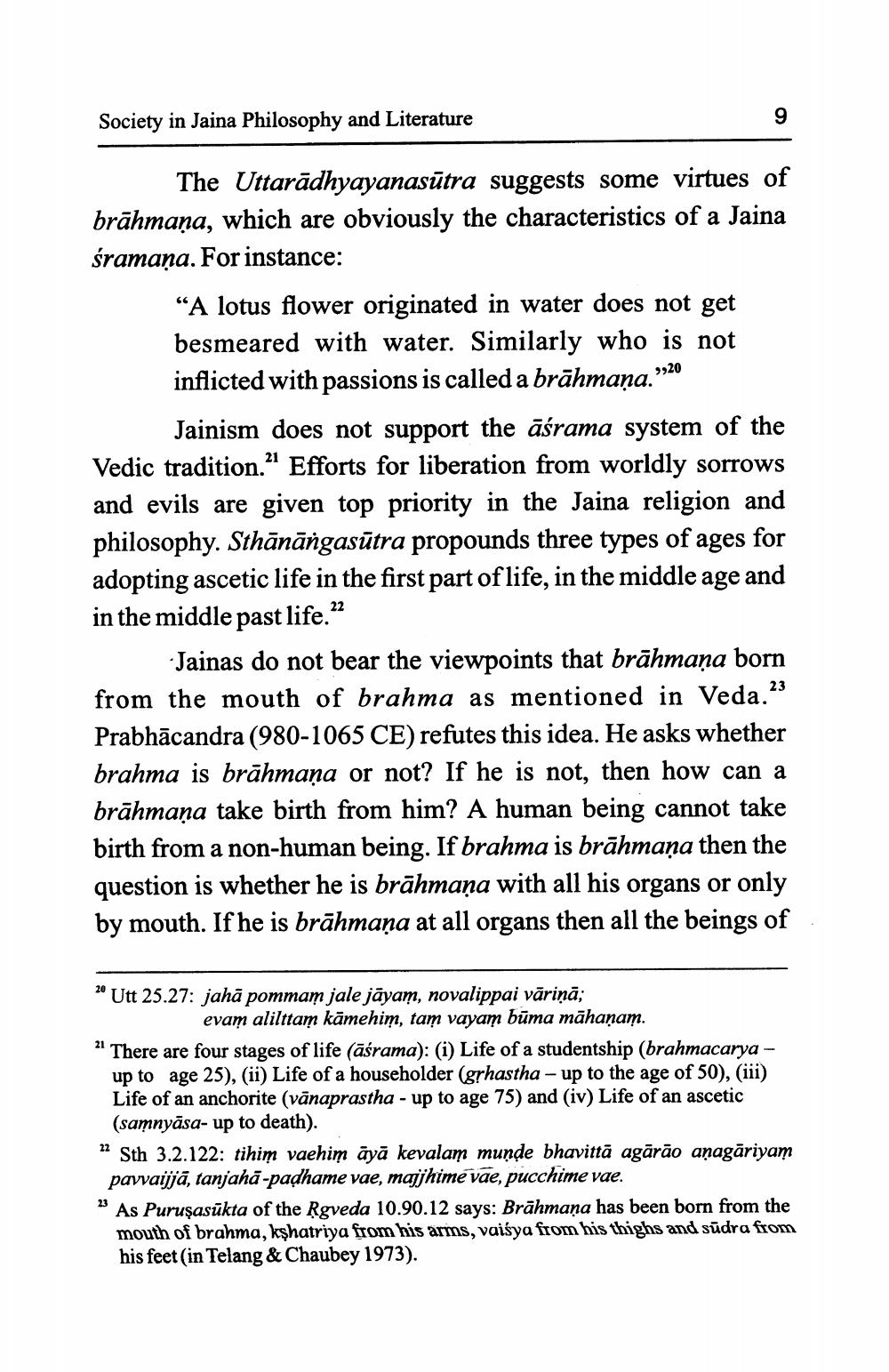________________
Society in Jaina Philosophy and Literature
The Uttarādhyayanasūtra suggests some virtues of brāhmaṇa, which are obviously the characteristics of a Jaina śramaņa. For instance:
“A lotus flower originated in water does not get besmeared with water. Similarly who is not inflicted with passions is called a brāhmaṇa. »20
Jainism does not support the āśrama system of the Vedic tradition.” Efforts for liberation from worldly sorrows and evils are given top priority in the Jaina religion and philosophy. Sthānāngasūtra propounds three types of ages for adopting ascetic life in the first part of life, in the middle age and in the middle past life. 22
Jainas do not bear the viewpoints that brāhmaṇa born from the mouth of brahma as mentioned in Veda.23 Prabhācandra (980-1065 CE) refutes this idea. He asks whether brahma is brāhmaṇa or not? If he is not, then how can a brāhmaṇa take birth from him? A human being cannot take birth from a non-human being. If brahma is brāhmaṇa then the question is whether he is brāhmaṇa with all his organs or only by mouth. If he is brāhmaṇa at all organs then all the beings of
Utt 25.27: jahā pommam jale jāyam, novalippai vāriņā;
evam alilttam kāmehim, tam vayam būma māhanam. There are four stages of life (āśrama): (i) Life of a studentship (brahmacarya -- up to age 25), (ii) Life of a householder (grhastha - up to the age of 50), (iii) Life of an anchorite (vānaprastha - up to age 75) and (iv) Life of an ascetic (samnyāsa- up to death).
Sth 3.2.122: tihim vaehim āyā kevalam munde bhavittā agārāo anagāriyam pavvaijjā, tanjaha-padhame vae, majjhime vae, pucchime vae. * As Puruşasūkta of the Rgveda 10.90.12 says: Brāhmana has been born from the mouth of brahma, kshatriya from his arms, vaiśya from his thighs and sūdra from his feet (in Telang & Chaubey 1973).




